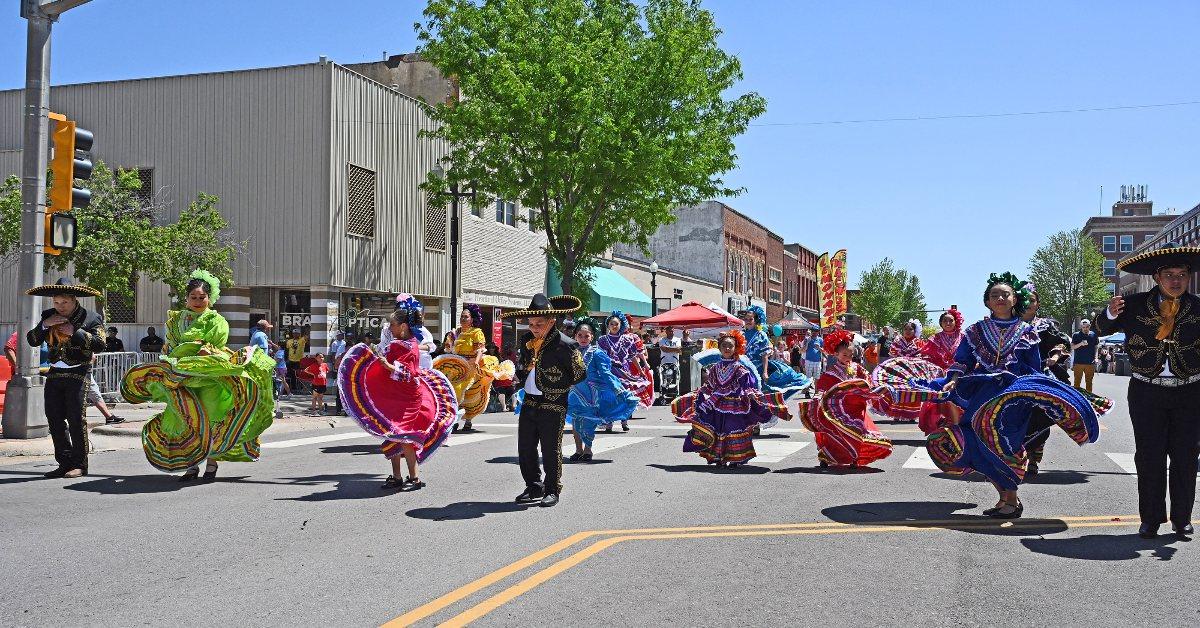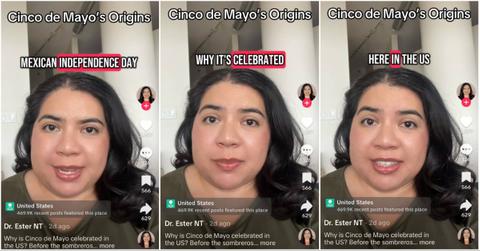Why Is Cinco de Mayo Celebrated in the U.S.? Inside the History of the Holiday
Have you ever wondered why Cinco de Mayo is such a big holiday in the U.S.?
Published May 5 2025, 10:28 a.m. ET
Every year on May 5, you’ll probably hear someone shout “Happy Cinco de Mayo!” at work, in school, or on social media. Your calendar app helpfully reminds you of the day. Instagram or Facebook may even ask if you want to add a Cinco de Mayo sticker to your latest story.
Suddenly, everything is tacos, margaritas, and bright colors. Have you ever stopped and wondered: Why is Cinco de Mayo celebrated in the U.S.? If it’s a Mexican holiday, what does it have to do with Americans?
It’s a fair question, especially when you realize that Cinco de Mayo isn’t even Mexico’s Independence Day. That falls on Sept. 16. So, what exactly are we celebrating every year on May 5? Furthermore, why has it become such a big deal in the U.S.?

Why is Cinco de Mayo celebrated in the U.S. more than in Mexico?
The answer lies in a lesser-known moment from Mexican history: the Battle of Puebla. On May 5, 1862, a small, outmatched Mexican army pulled off a surprise victory against French forces. According to History.com, the win didn’t end the war, but it became a lasting symbol of resistance and national pride, especially in the region of Puebla where the battle took place.
In Mexico, the day is commemorated primarily in Puebla, but it’s not a federal holiday. Furthermore, it doesn’t carry the national importance that Independence Day does. So, how did this minor regional holiday make its way north and explode in popularity across the U.S.?
Mexican-Americans embraced the holiday as a symbol of identity and cultural pride.
The rise of Cinco de Mayo in the U.S. really began in the 20th century. This was especially true during the 1960s and '70s when Mexican-American activists embraced the holiday as a way to celebrate their heritage. It became more than just a battle anniversary — it became a cultural statement. In cities with large Mexican-American populations, celebrations featured mariachi bands, folk dancers, traditional foods, and community parades.
As Britannica explains, this American version of the holiday emphasized pride and cultural recognition more than historical accuracy. It allowed Mexican-Americans to reclaim their story, share their customs, and strengthen community identity during a time of major civil rights movements.
Corporate America transformed Cinco de Mayo into a commercial celebration.
Like many holidays in the U.S., Cinco de Mayo didn’t stay purely cultural for long. By the 1980s and '90s, marketers realized the day could also be used to sell products, especially alcohol, food, and party supplies. Today, brands roll out themed packaging, restaurants host margarita specials, and even non-Latino communities get in on the festivities.
This commercialization has helped spread awareness of the holiday, but not without criticism. Some argue it leads to shallow stereotypes or turns important cultural symbols into party decorations. Others say it offers an opportunity, however imperfect, to celebrate Mexican culture, as long as it’s done with respect and understanding.
Despite the misunderstandings and marketing, Cinco de Mayo can still serve as a reminder of the deep cultural connections shared between Mexico and the U.S. It’s a day that highlights the contributions of Mexican-Americans to U.S. society, from art and music to cuisine and activism.
